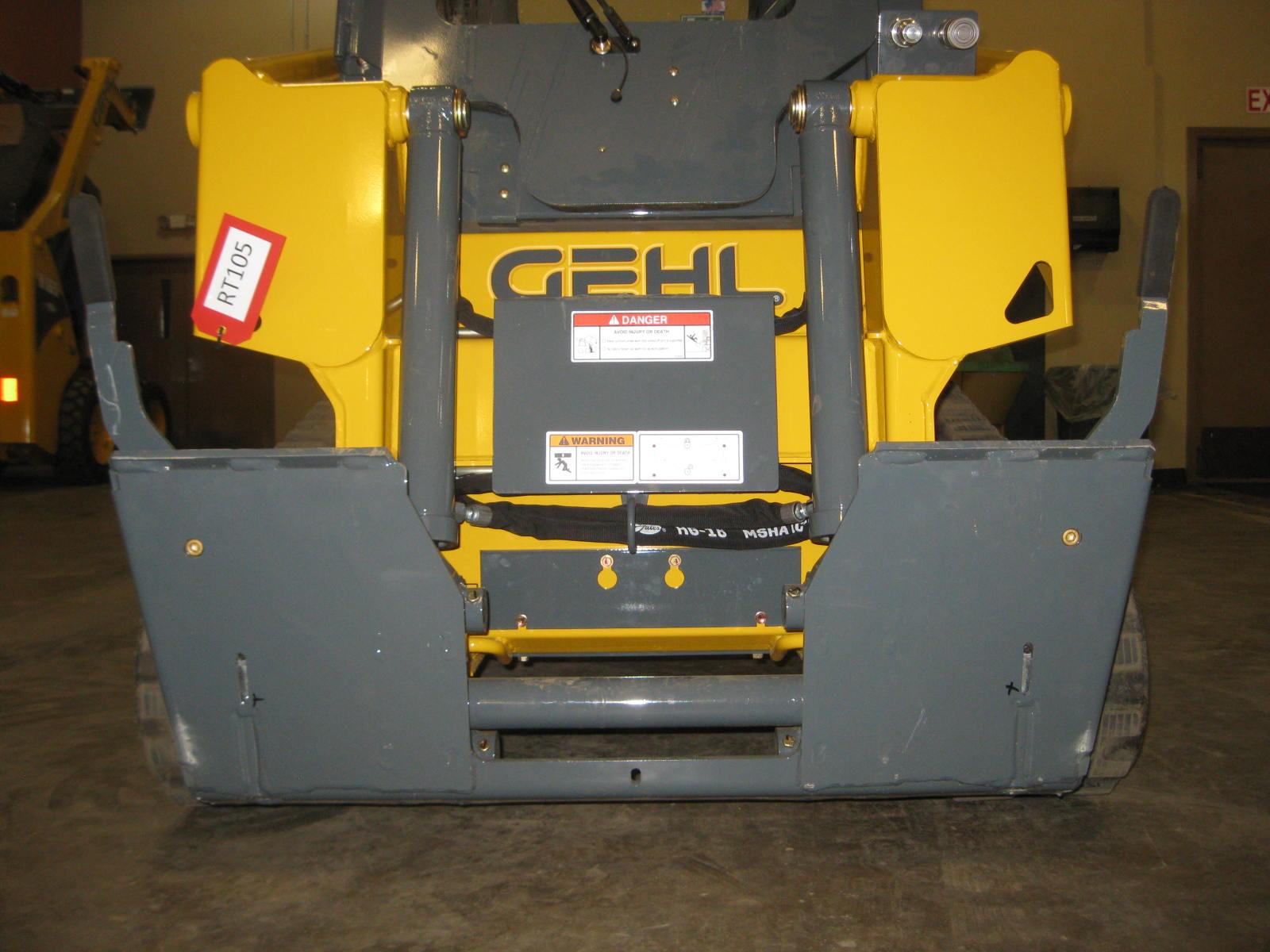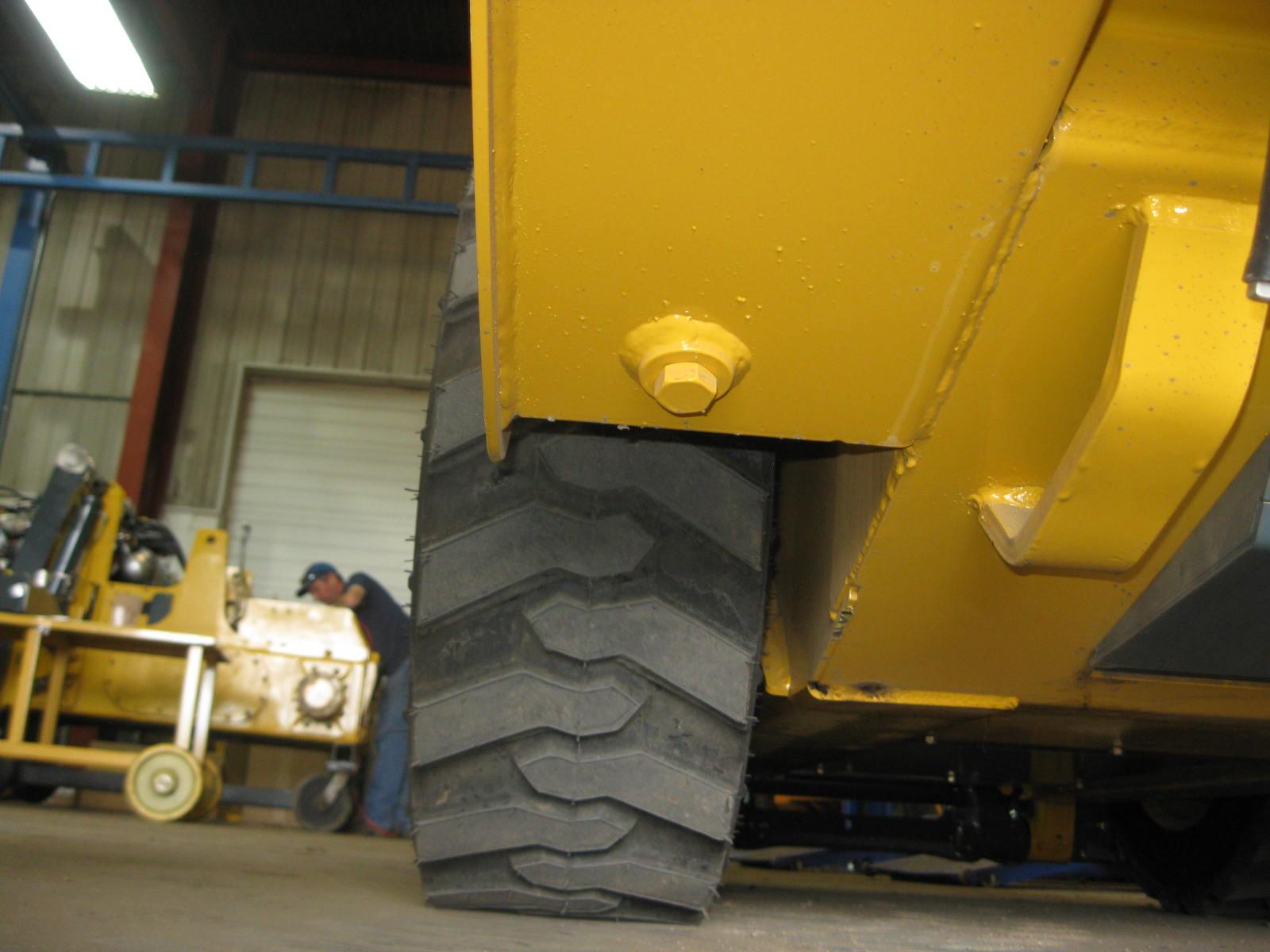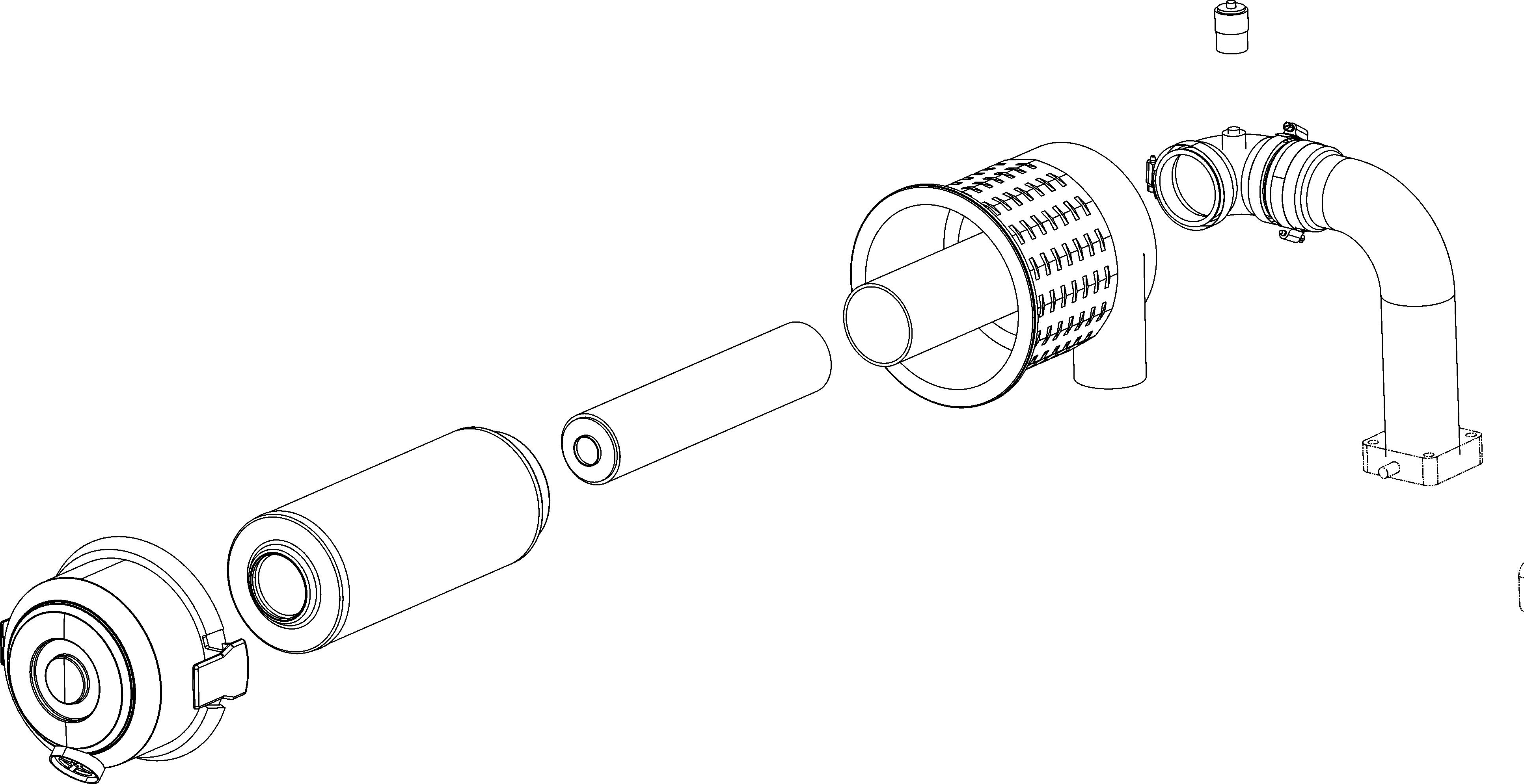
3 minute read
Servo Whole-Body and Hand-Arm Vibration Levels*
*Whole-Body Vibration levels in accordance with ISO 2631-1. Hand-Arm Vibration levels in accordance with ISO 5349-1.
Highway Travel
If it becomes necessary to move the loader a long distance, use a properly rated trailer. (See “Transporting/Towing the Loader” on page54.) For short distance highway travel, attach an SMV (Slow-Moving Vehicle) emblem (purchased locally) to the back of the loader. For highway operation, install the optional amber strobe light. Check state and local laws and regulations.
Lifting the Loader
The loader can be lifted using a single-point or four-point lift kit, which is available from your Gehl dealer.
•Before lifting, check the lift kit for proper installation.
•Never allow riders in the operator’s compartment while the loader is lifted.
•Keep everyone a safe distance away from the loader while it is lifted.
•Loader may only be lifted with an empty bucket or empty pallet forks, or with no attachment. Never lift the loader with attachments other than those stated.
Lift equipment used and its installation is the responsibility of the party conducting the lift. All rigging MUST comply with applicable regulations and guidelines.
1.Using suitable lift equipment, hook into the lift eyes. Adjust the length of the slings or chains to lift the loader level.
Important: As needed, use a spreader bar to prevent the slings or chains from rubbing the sides of the ROPS/FOPS. (Four-point lift only)
Note: The loader may be slightly off level (10 degrees max.) when lifted.
2. Center the hoist over the ROPS/FOPS. To prevent shock loading of the equipment and excessive swinging, slowly lift the loader off the ground. Perform all movements slowly and gradually. As needed, use a tag line to help position the loader and keep it from swinging.
Storing the Loader
If the skid-steer loader is to be stored for a period in excess of two months, the following procedures are suggested:
1.Fully inflate the tires.
2. Lubricate all grease zerks.
3. Check all fluid levels and replenish as necessary. (Review and follow the engine manufacturers recommendations from the Engine Operator’s Manual.)
4. Add stabilizer to the fuel per the fuel supplier’s recommendations. If the fuel has a mixture of BioDiesel, empty the fuel tank before storing.
5. Turn the electrical battery disconnect switch to its OFF position and remove the battery, charge it fully and store in a cool, dry location.
6. Protect against extreme weather conditions such as moisture, sunlight and temperature.
Removing Loader from Storage
1.Check the tire air pressure and inflate the tires if they are low.
2. Connect the battery and check that the electrical battery disconnect switch is turned to its ON position.
3. Check all fluid levels (engine oil, transmission/hydraulic oil, engine coolant and any attached implements). (Review and follow the engine manufacturers recommendations from the Engine Operator’s Manual.)
4. Start the engine. Observe all gauges. If all gauges are functioning properly and reading normal, move the machine outside.
5. Once outside, park the machine and let the engine idle for at least five minutes.
6. Shut the engine off and walk around machine. Make a visual inspection looking for evidence of leaks.
Transporting/Towing the Loader
Park the truck or trailer on a level surface. Be sure the vehicle and its ramps have the weight capacity to support the loader. Make sure the vehicle surface and its ramps are clear of debris and slippery material that may reduce traction. Move the loader on and off the vehicle ramp slowly and carefully. Failure to follow these instructions could result in an overturn accident. Towing the loader is not recommended as a means of transportation.
Observe all local regulations governing the loading and transporting of equipment
(Reference: U.S. Federal Motor Carrier Safety Regulations, Section 392). Ensure that the hauling vehicle meets all safety requirements before loading the skid-steer loader. Use the tie down/retrieval points in situations where lifting the loader is not possible and the overall distance by which the loader is to be moved is less than 100 feet (30.5 m) at 6 mph (10 km/hr) or less. The optional brake release package (page 48)facilitates loader retrieval in such situations. When transporting a loader:
1.Block the front and rear of the hauling vehicle’s tires.
2. If the loader has an attachment, lift it slightly off the ground.
3. Back the loader slowly and carefully up the ramp onto the vehicle.
4. Lower the loader attachment to the vehicle deck, turn off the engine and remove the key.

5. Fasten the loader to the hauling vehicle at the points indicated by the tiedown decals (Figure7 and Figure8).
6. Measure the clearance height of the loader and hauling vehicle. Post the clearance height in the cab of the vehicle.
When towing a loader:
1.Connect the towline to both tie down/retrieval points at the front or the rear of the loader. Use of only a single retrieval point or connecting the towline to any point on the loader other than the designated retrieval locations could result in loader damage.
2. The towline strength is at least 1.5 times the gross weight of the loader. The towline length is such that the maximum towing angle does not exceed 20°.








